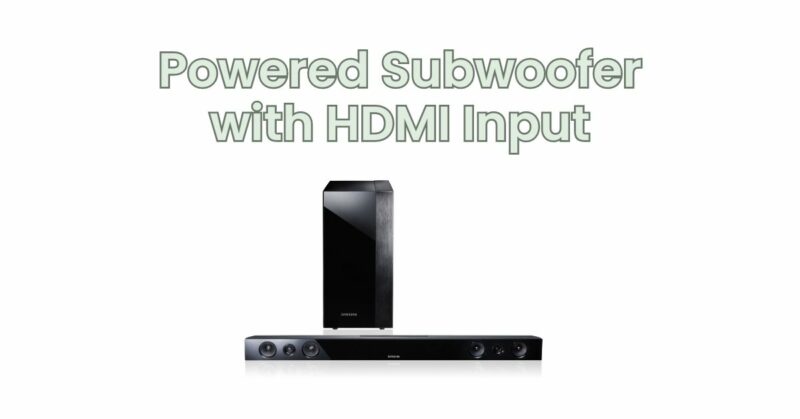Powered subwoofers are an excellent addition to any audio setup, delivering deep and impactful bass that enhances the overall sound experience. While most subwoofers connect to audio systems through traditional methods such as RCA or speaker wire connections, some models offer the added convenience of an HDMI input. In this article, we will delve into the world of powered subwoofers with HDMI input, exploring their benefits and providing insights into how they can be seamlessly integrated into your audio system.
The Advantages of HDMI Input:
- Simplified Setup: One of the main advantages of a powered subwoofer with HDMI input is the simplified setup process. HDMI cables are widely used for high-definition audio and video transmission, making it easy to connect the subwoofer to compatible devices like AV receivers, soundbars, or home theater systems.
- Enhanced Audio Quality: HDMI cables support various audio formats, including lossless surround sound formats like Dolby TrueHD and DTS-HD Master Audio. By connecting your powered subwoofer through HDMI, you can enjoy high-quality audio with immersive surround sound capabilities and an enhanced bass experience.
- Audio and Video Integration: HDMI cables transmit both audio and video signals, allowing for seamless integration of your subwoofer into your audiovisual setup. This is particularly useful when using a home theater system or soundbar that connects to the TV via HDMI, as the subwoofer can receive audio signals directly from the HDMI input, synchronizing audio and video for a more immersive experience.
Connecting a Powered Subwoofer with HDMI Input:
- Verify Compatibility: Before connecting a powered subwoofer with HDMI input, ensure that your audio source, such as an AV receiver or soundbar, supports HDMI output. Check the user manuals or product specifications of your devices to verify compatibility.
- Connect HDMI Cable: Using a high-quality HDMI cable, connect one end to the HDMI output port of your audio source device and the other end to the HDMI input port on the powered subwoofer. Ensure a secure connection on both ends.
- Configure Audio Settings: Access the audio settings on your audio source device and select the appropriate audio output configuration. Set the audio output to include the subwoofer to ensure that the low-frequency signals are routed to the powered subwoofer through the HDMI connection.
- Fine-Tune Subwoofer Settings: Once connected, access the settings on your powered subwoofer, usually available through a control panel or dedicated app. Adjust the subwoofer’s volume, crossover frequency, phase, and other settings to optimize the bass response and achieve the desired sound balance within your audio system.
Conclusion: Powered subwoofers with HDMI input offer a convenient and efficient way to integrate deep bass into your audio system. With the advantages of simplified setup, enhanced audio quality, and seamless audio and video integration, these subwoofers provide an immersive and dynamic sound experience. By following the steps outlined in this article and ensuring compatibility between your devices, you can effortlessly connect and configure your powered subwoofer with HDMI input. Sit back, relax, and enjoy the powerful bass response as your subwoofer complements your audio system, immersing you in a world of rich sound and cinematic experiences.


